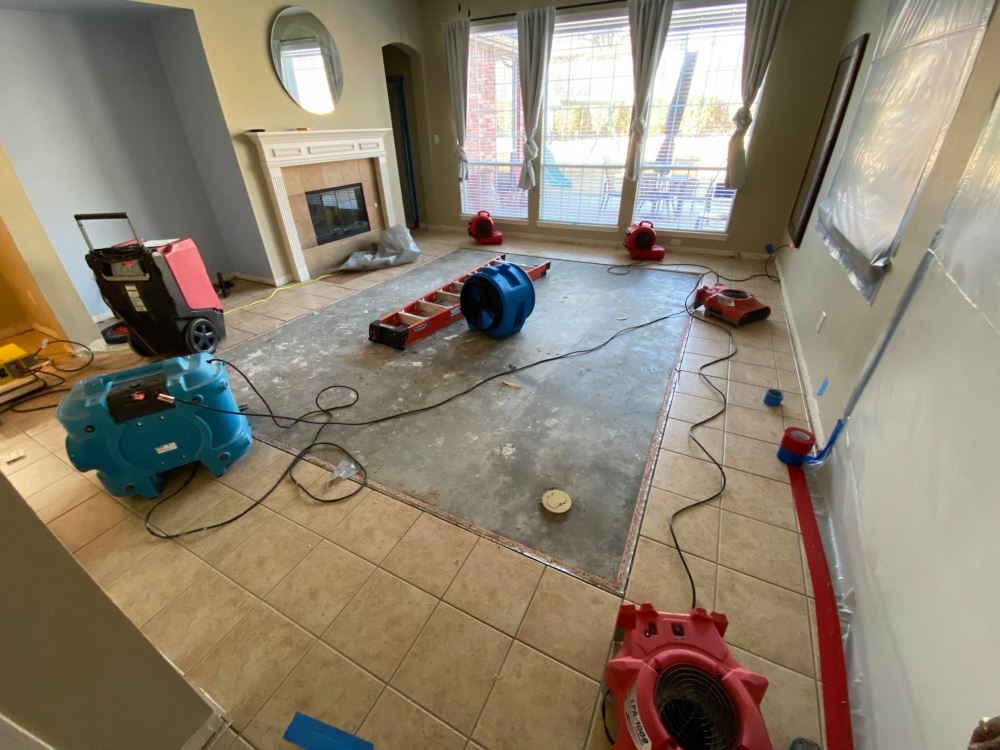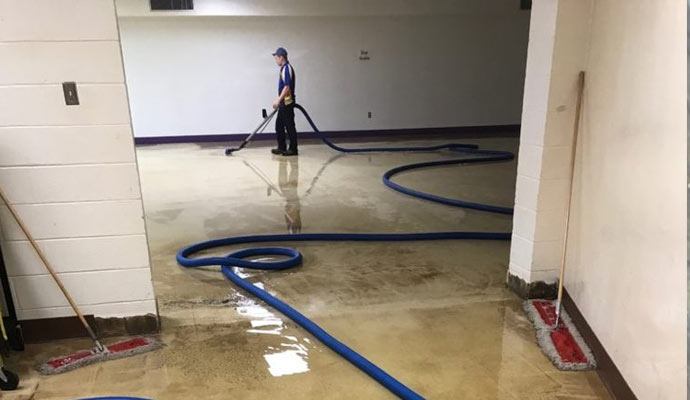Water Damage Restoration 101: Comprehending the Process and Expense
Water damage can strike unexpectedly, leaving homeowners in a state of confusion. Comprehending the repair procedure is necessary for effective recovery. From evaluating the damage to choosing the best solution copyright, each action influences the total end result and price. Variables such as the kind of water damage and necessity additionally play a substantial duty. What are the details strategies made use of in reconstruction, and exactly how can one get ready for potential expenditures?
Kinds of Water Damage
Water damage can emerge from numerous resources, each providing distinct challenges for restoration. The 3 main types of water damage are categorized based on contamination degrees: tidy water, gray water, and black water. Tidy water stems from resources like busted pipelines or rainwater, presenting very little health and wellness risks. Gray water, which consists of wastewater from sinks or cleaning makers, includes contaminants that may create pain or disease if ingested. Black water, one of the most dangerous category, originates from sewage or floodwaters, containing harmful bacteria and pathogens. Each type demands specific reconstruction methods and safety and security actions to successfully mitigate and resolve the damage health threats. Comprehending these differences is essential for specialists and property owners involved in the water damage reconstruction procedure.
First Evaluation and Inspection
A complete preliminary analysis and examination are essential actions in the water damage remediation process. This phase begins with a professional examining the level of the damage, recognizing the resource of the water breach, and determining the kind of water included - Water Damage Restoration. Professionals use customized equipment to measure moisture levels in different materials, such as walls, floors, and furniture. Furthermore, they analyze architectural stability and prospective carcinogen, consisting of mold and mildew development. The searchings for from this examination educate the remediation strategy, directing required actions and resource appropriation. Exact documents of the damage is crucial for insurance policy cases and future referral. Generally, this preliminary assessment lays the groundwork for reliable reconstruction, making certain an in-depth reaction to the specific circumstance handy

Water Extraction Techniques
Complying with the initial analysis, effective water extraction methods are utilized to reduce damage and protect against additional problems. These techniques entail using specialized tools such as completely submersible pumps and industrial-grade vacuums. The choice of technique depends upon the volume of water existing and the type of products influenced. For standing water, completely submersible pumps are generally utilized for quick removal, while vacuum cleaners are suitable for extracting water from carpetings and upholstery. In addition, advanced approaches like water removal mats may be employed for hard-to-reach areas. The objective is to eliminate as much water as feasible, reducing the possibility for mold development and structural damage. Trigger and effective water removal is necessary in the overall water damage remediation procedure.
Drying and Dehumidification Process
Once the water extraction is full, the drying out and dehumidification procedure comes to be important to restoring the afflicted location. This stage normally utilizes industrial-grade dehumidifiers and air movers to properly decrease dampness levels. The dehumidifiers pull in wet air, eliminating excess moisture, while air movers distribute air to increase evaporation. Monitoring devices is often used to track moisture and temperature levels, making certain perfect drying conditions. The period of this procedure can differ depending upon the level of the water damage and environmental variables. It is vital to extensively completely dry all affected materials, including walls, flooring, and furnishings, to stop mold and mildew development and structural damage. Appropriate execution of this step is important for an effective repair end result.
Cleansing and Disinfecting Damaged Locations

Initial Analysis and Inspection
Prior to beginning any reconstruction efforts, a comprehensive first evaluation and inspection of the impacted areas are vital for efficient cleaning and disinfecting. This process includes identifying the level of water damage, establishing the source of the water intrusion, and evaluating the products impacted. Inspectors typically try to find indications of mold and mildew growth, architectural stability problems, and harmed personal belongings. The assessment likewise consists of inspecting wetness levels utilizing customized tools to guarantee no covert water pockets stay, as these can result in further problems. Recording the findings is important for planning the next action in the remediation procedure. An in-depth first assessment makes it possible for repair specialists to create a targeted approach for efficient cleansing and sanitizing, inevitably reducing damage and wellness risks.
Cleaning Up Strategies and Products
Effective cleansing and sanitizing of water-damaged areas need a selection of techniques and items tailored to the specific materials affected. For permeable surface areas like drywall and carpets, removal approaches are necessary to get rid of excess dampness, adhered to by deep cleansing with specialized cleaning agents. Non-porous materials such as ceramic tile or metal can be cleaned making use of commercial-grade cleansers that properly get rid of impurities. Heavy steam cleaning is another effective strategy, specifically for rugs and upholstery, as it uses high temperatures to eliminate bacteria and mold and mildew. Furthermore, eco-friendly items are progressively prominent for their safety and efficiency. Eventually, selecting the appropriate cleansing techniques and products not just ensures immediate cleanliness yet likewise aids in protecting against additional damage and health threats connected with water intrusion.
Sanitization and Disinfection Approaches
When attending to water damage, proper sanitization and disinfection approaches are vital to ensure the safety and health and wellness of the affected setting. After initial cleansing, surfaces need to be treated with ideal anti-bacterials to eliminate virus, mold, and germs that grow in wet conditions. Common approaches include using EPA-approved chemical anti-bacterials, which can be used through splashing or wiping techniques. In addition, ultraviolet (UV) light systems can effectively sterilize locations by neutralizing bacteria without rough chemicals. The choice of technique often depends upon the kind of products influenced and link the extent of contamination. Eventually, extensive sanitization not only recovers a safe living space but likewise aids prevent future health dangers associated with sticking around moisture and mold and mildew development.

Repairs and Restoration Options

Factors Affecting Restoration Costs
The degree of water damage straight impacts the repair costs house owners can expect to incur. Variables such as the source of the water, the period of direct exposure, and the affected materials substantially influence prices. Tidy water damage from a broken pipeline is usually less expensive to recover contrasted to damage caused by sewage (Water Damage Restoration). Furthermore, the degree of contamination dictates the need for specialized cleaning and disposal services, additionally raising expenses. Geographic place likewise contributes, as local labor prices and accessibility of remediation solutions can vary. Ultimately, the seriousness of the response impacts costs; quicker interventions typically cause lower general expenses by stopping further damage. Understanding these aspects is vital for house owners when approximating restoration expenses
The 3 primary kinds of water damage are classified based on contamination levels: clean water, gray water, and black water. A complete initial evaluation and examination are vital actions in the water damage repair process. For standing water, submersible pumps are commonly made use of for fast removal, while vacuum cleaners are excellent for removing water from rugs and upholstery. The level of water damage directly influences the repair costs home owners can anticipate to incur. Clean water damage from a busted pipe is generally much less costly to recover compared to damage created by sewage.